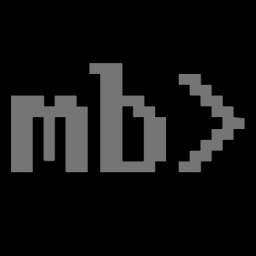Tell me your favourite rescue USB image and why!
Also rescue tips and tricks as that’s always interesting.
I have been using a Debian installer USB as I had it to hand (DVD image IIRC) but if I boot into a shell without mounting another root FS the number of utilities is quite limited (just busybox basics). For example just now I wanted gzip but it only had gunzip…
I feel like a shell started from the installer USB should have access to a lot more utilities because the files are there on the disk!
Does anyone know a way to set up a kind of USB like the debian installer where you can install packages from the installer into the live environment?
I’ve just got Arch Linux installed on a USB drive. I set it up so it works with both UEFI and legacy BIOS boot. It works great - I can install whatever tools I need on it, I can even use it as a little portable Linux drive if I need that. I’ve also used it to install Arch on a number of my computers.
The only issue is that the USB drive is pretty slow, so it’s not the best experience using it
Slower than the kind of shell you get in the Debian installer?
Is it slower because it’s trying to log and write to the root fs whereas the installer runs everything in RAM and doesn’t write to the USB?
Yeah I think so. There are some optimisations that can be done to improve things, but at the end of the day it’s running off a slow USB drive
I do the same thing with NixOs, pretty handy but damn slow.
I’ve been using SystemRescue (formerly SystemRescueCD) since forever & it’s usually more than enough for anything I need to get done. Though nowadays just about any Linux live image can probably do the job if that’s all you have at the moment.
I use the same since, at least, version 6. It helps with lots of problems.
I mostly use systemrescueCD, but in fact it doesn’t really matter. All I usually need is to mount the root filesystem, dev, sys and proc, then chroot into this environment and fix the breakage. Any live image will work for that.
I just use whatever live image I last wrote to a flash drive, because it requires zero extra effort or storage, and they all have what I would need from a rescue environment anyway.
So what would you do if you needed gzip like in my example? In this example I was able to mount the root FS of the existing system to use it but that isn’t always possible.
I use full desktop live images. They have gzip, among many other things, including the ability to install more packages into the live environment’s RAM disk.
I use a Puppy Linux derivative - QuickPup64 to be exact. What sets this apart from other Puppies is that QuickPup is updated regularly and has a recent kernel, with the biggest advantage being that QuickPup is compatible with almost all the popular Linux package formats out there.
Wider package support. Aside from PET, Debian (DEB), Red Hat (RPM), Slackware (TXZ, TGZ), and Arch Linux packages (PKG.TXZ). It also accepts the following packages (natively installed, no more package conversion needed. This allows to utilize almost all available linux packages): ->Slitaz (*.tazpkg) ->Tiny Core (*.tcz,*.tce,*.tcel,*.tcem) ->Pardus (*.pisi) ->Alpine Linux (*.apk) ->Slax (*.sb) ->OpenWRT (*.ipk) ->0linux (*.spack) ->Void linux (*.xbps) ->Damn Small Linux (*.dsl) ->Puppyrus (*.pfs) ->Nutyx (*.cards.tar.xz) ->Solus (*.eopkg) ->Stampede (*.slp) ->Porteus (*.xzm,*.lzm) ->Gentoo precompiled package (*.xpak) ->Paldo Linux ->Venom Linux (*.spkg.txz)I also have to say that Puppy is fast - it’s designed to be run off USB and work on older systems with limited resources, so this thing absolutely flies, compared to a regular distro.
I have a drive with Ventoy on it and ISOs for Hiren’s, Rescatux, and NixOS, along with a custom ISO of NixOS with some tools pre-installed. Super easy to generate.
Did you make the custom ISO of NixOS yourself? What did you add?
I did, instructions are here! I don’t remember off the top of my head, but I think it’s mostly network related tools like nslookup and nmap. You can easily add anything you can find on their package search.
Thanks!
Gparted-live or base Archlinux for me as I have the most experience with these 2
Yeah, i just use Arch or Ubuntu install.
I’m using Hiren’s Boot CD (not PE), it has a handy linux rescue environment and password reset utility.
But if it doesn’t count, recent I found MX Linux installation USB are also useful for me to do partition tasks, as well as grabbing files from folders with limited privileges of my Windows partition.
I have a Porteus USB that I keep handy with my old Hirens USB. It’s Slackware based and a bit goofy when it comes to installing other apps, but because it’s a USB portable OS first I feel it’s one of the ones that handles that limitation best. I used to use Puppy IIRC.
This looks pretty cool, I will do some research!




